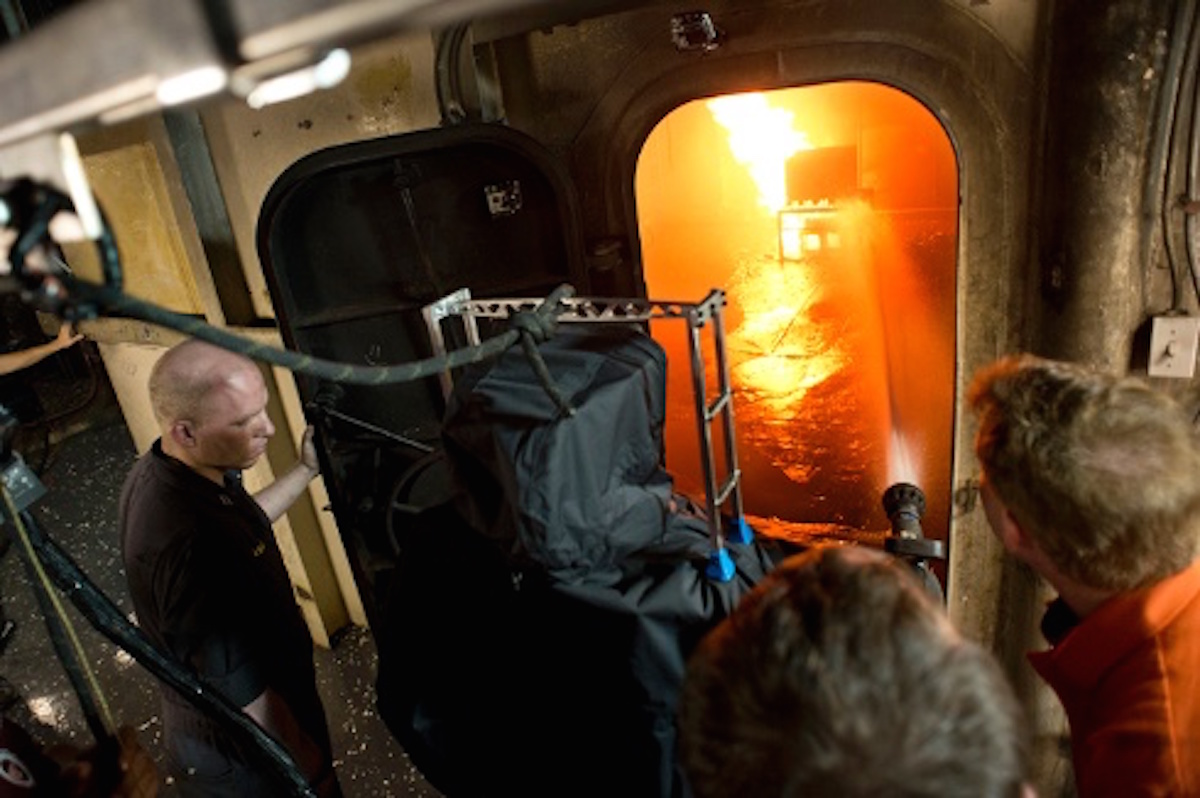New Grant Brings Firefighting SAFFiR Robot A Step Closer to Reality

Here’s a bright idea: Rather than imperil human life by sending firefighters into dangerous infernos, send in a firefighting robot to do the dirty work.
That’s the gist of a new $600,000 grant awarded by the Office of Naval Research to a team of researchers at Worcester Polytechnic Institute. The funding will go toward developing software that allows an existing robot known as SAFFiR to better navigate tight spaces and extinguish fires.
SAFFiR—which is pronounced “safer” and is an acronym for Shipboard Autonomous Firefighting Robot—stands nearly 6 feet tall and weighs 140 pounds. Originally developed by Virginia Tech researchers, the robot is designed to fight fires on Naval ships.
Now WPI is trying to make the robot a bit more savvy and nimble for when it comes time to walk into a burning engine room. Dmitry Berenson, a professor computer science and robotics engineering at WPI, said in a statement that his team’s experience with “motion planning for humanoid robots, which must perform in complicated scenarios” was likely a big draw to the Navy. If the project proves successful, it’s plausible that the robot could adapt to fighting fires in all types of environments.
In past experiments, SAFFiR has proven capable of locating and walking toward a fire, as well as grabbing a fire hose and dousing flames. Berenson and his colleagues will work on developing algorithms that build on these functions and help the robot better maneuver through the chaos of ship fires.
While promising, there’s still a long way to go before SAFFiR is ready for real-world action.
Later this year, the WPI team will test its algorithms in the actual robot in controlled conditions within a ship environment mock-up at Virginia Tech. The robot will walk up stairs and perform other locomotion tasks “to ensure the algorithms are generating the correct motion,” Berenson said.
In a later phase of the research, the robot’s capabilities will be tested again aboard the USS Shadwell, a decommissioned U.S. Navy landing ship docked in Mobile Bay, Ala.
For a better idea of how it works, check out this video:


